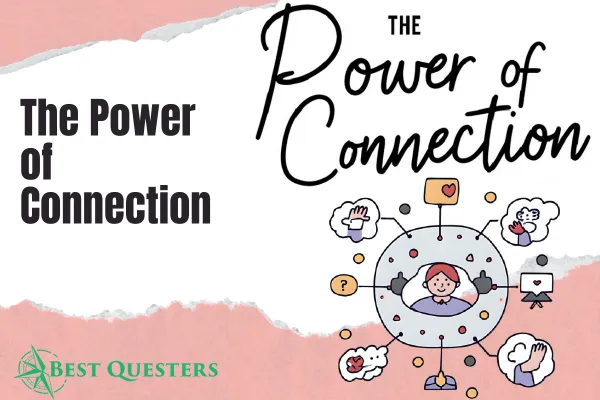
The Power of Connection – Blog Post #1
Beyond the Checklist: What Students Really Need from Us
Series: The Power of Connection – Blog Post #1
“Learning doesn’t begin with content. It begins with connection.” — Dr. Brad Johnson
If you’re a teacher, your to-do list is probably a mile long. Lesson plans. Grading. Emails. IEPs. Copies. More grading.
But in the midst of all the pressure, there’s something deeper tugging at us. Something not found on a checklist or pacing guide. A quiet reminder of why most of us stepped into this profession in the first place: to make a difference. To matter in the life of a child. To be that person a student remembers—not just for the content we delivered, but for how we made them feel.
Post-pandemic, many students are arriving in our classrooms with more emotional needs than ever. Anxiety, grief, and disconnection show up as “defiance,” “distraction,” or “disengagement.” But beneath those behaviors is often a simple question:
Do you see me? Do I matter here?
If we want to reach students academically, we have to meet them emotionally.
In High Five to Thrive, we explore the powerful concept of leading students—not just managing them. This is where connection comes in. Because great classroom leadership isn’t about compliance or control. It’s about influence. And influence is rooted in trust.
Connection is built in the margins—in the moments between lessons, in how we respond when students stumble, and in the energy we bring into the room. It’s in our tone, our curiosity, our belief in a student’s potential even when they’re struggling to see it themselves. It’s in seeing every child as a “10,” even when their behavior doesn’t show it.
This doesn’t mean connection is one more thing to add to your overflowing plate. In fact, it’s the plate. When connection is the foundation, everything else becomes more manageable. Engagement increases. Disruptions decrease. We move from pushing students through the day to pulling them into a shared vision of what they can become.
Let’s talk about your to-do list for a moment.
What if, alongside “enter grades” and “review unit plan,” your list included items like:
Make eye contact with every student today.
Greet students at the door with warmth.
Ask one student a question just to learn more about them.
Offer non-contingent praise—praise for who a student is, not just what they do.
Notice who’s withdrawn and find a small way to reach out.
These are small shifts. Small biggies, as we call them in High Five to Thrive. But over time, they change the entire emotional climate of a classroom. They make students feel safe, seen, and supported. They raise the minimum standard for what school can feel like—not just for students, but for teachers too.
Because here’s the truth: teaching is emotional work. And no curriculum map or behavioral protocol can substitute for the magic that happens when a student feels valued by the adult in the room.
That’s why Classroom Leadership starts with connection. It starts with you—your presence, your warmth, your willingness to see the diamond inside the coal.
So here’s an invitation:
Take a look at your usual to-do list. Then create a new one. A list that reflects not just what you do, but who you are as a Classroom Leader.
Because it’s not the lesson plan or the seating chart that changes lives. It’s you. Connection
is where real learning begins.
